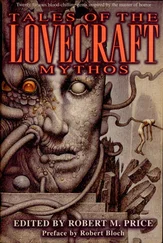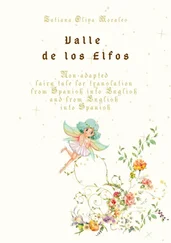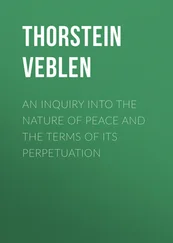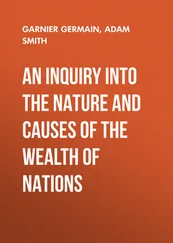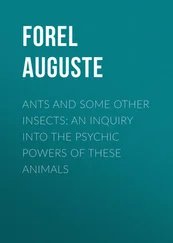Robert Pirsig - Lila. An Inquiry Into Morals
Здесь есть возможность читать онлайн «Robert Pirsig - Lila. An Inquiry Into Morals» весь текст электронной книги совершенно бесплатно (целиком полную версию без сокращений). В некоторых случаях можно слушать аудио, скачать через торрент в формате fb2 и присутствует краткое содержание. Жанр: Современная проза, на английском языке. Описание произведения, (предисловие) а так же отзывы посетителей доступны на портале библиотеки ЛибКат.
- Название:Lila. An Inquiry Into Morals
- Автор:
- Жанр:
- Год:неизвестен
- ISBN:нет данных
- Рейтинг книги:3 / 5. Голосов: 1
-
Избранное:Добавить в избранное
- Отзывы:
-
Ваша оценка:
- 60
- 1
- 2
- 3
- 4
- 5
Lila. An Inquiry Into Morals: краткое содержание, описание и аннотация
Предлагаем к чтению аннотацию, описание, краткое содержание или предисловие (зависит от того, что написал сам автор книги «Lila. An Inquiry Into Morals»). Если вы не нашли необходимую информацию о книге — напишите в комментариях, мы постараемся отыскать её.
Lila. An Inquiry Into Morals — читать онлайн бесплатно полную книгу (весь текст) целиком
Ниже представлен текст книги, разбитый по страницам. Система сохранения места последней прочитанной страницы, позволяет с удобством читать онлайн бесплатно книгу «Lila. An Inquiry Into Morals», без необходимости каждый раз заново искать на чём Вы остановились. Поставьте закладку, и сможете в любой момент перейти на страницу, на которой закончили чтение.
Интервал:
Закладка:
They did so because those movies were a confirmation of the values they believed in. Those movies were rituals, almost religious rituals, for transmitting the cultural values of America to the young and reconfirming them in the old. It wasn’t a deliberate, conscious process; people were just doing what they liked. It is only when one analyzes what they liked that one sees the assimilation of Indian values.
Others of the thousands of slips in Phædrus' trays continued this analysis: many Europeans think of white Americans as a sloppy, untidy people, but they’re not nearly as untidy as the Indians on the reservations. Europeans often think of white Americans as being too direct and plain-spoken, bad-mannered and sort of insolent the way they do things, but Indians are even more that way. In the Second World War Europeans noted that American troops drank too much, and when they got drunk they made a lot of trouble. The comparison with Indians is obvious. But on the other hand, European military commanders rated the stability of American troops under fire as high, and that is also an Indian characteristic.
That steady When you say that, smile! look the cowboy movies love to portray (and Europeans tend to abhor) is pure Indian, except that when the Indian looks that way it doesn’t necessarily mean he is threatening. What causes that steady look comes from something much deeper.
Indians don’t talk to fill time. When they don’t have anything to say, they don’t say it. When they don’t say it, they leave the impression of being a little ominous. In the presence of this Indian silence, whites sometimes get nervous and feel forced as a matter of politeness or kindness to fill the vacuum with a kind of small-talk which often says one thing and means another. But these well-mannered circumlocutions of aristocratic European speech are forked-tongue talk to the Indian and are infuriating. They violate his morality. He wants you to either speak from the heart or keep quiet. This has been a source of Indian-white conflict for centuries and, although the modern white American personality is a compromise of that conflict, the conflict still exists.
To this day Americans are mistakenly characterized by Europeans as like children, naive, immature and tending toward violence because they don’t know how to control themselves. That mistake is also made about Indians. To this day white Americans are also mistakenly characterized by Indians as a bunch of snobs who think you are so stupid you can never see how phony they are. That mistake is also made about Europeans.
This anti-snobbery of all Americans, particularly Western Americans, is derived from this Indian attitude. The Cheyenne name for white man is wihio, meaning spider. Arapaho use niatha to mean the same thing. To the Indian, whites seemed like spiders when they talked. They sat there and smiled and said things they didn’t mean, and all the time their mind was spinning a web around the Indian. They got so lost in their own web-spinning thoughts they didn’t even see that the Indian was watching them too and could see what they were doing.
The American politics of isolationism, in its refusal to become entangled in the meshes of European polities comes from this root, Phædrus thought. Most of American isolationism has come from regions that are closest to the American Indian.
The slips went on and on detailing European and Indian cultural differences and their effects, and as the slips had grown in number a secondary, corollary thesis had emerged: that this process of diffusion and assimilation of Indian values is not over. It’s still with us, and accounts for much of the restlessness and dissatisfaction found in America today. Within each American these conflicting sets of values still clash.
This clash, Phædrus thought, explained why others hadn’t seen long before what he had seen at the peyote meeting. When you borrow traits and attitudes from a hostile culture you don’t give them credit for it. If you tell a white from Alabama that his Southern accent is derived from Negro speech he is likely to deny and resent it, although the geographical congruity of the Southern accent with areas of huge black population makes this pretty obvious. Similarly if you tell a Montana white living near a reservation that he resembles an Indian he may take it as an insult. And if you’d said it a hundred years ago you might have had a real fight on your hands. Then Indians were fiends from hell! The only good one was a dead one.
But even though Indians were never given proper credit for their contribution to the American frontier personality values, it’s certain that these values couldn’t have come from anyone else. One often hears frontier values spoken of as though they came from the rocks, the rivers or the trees of the frontier, but trees, rocks and rivers do not by themselves confer social values. They’ve got trees, rocks and rivers in Europe.
It was the people living among those trees, rocks and rivers who are the source of the values of the frontier. The early frontiersmen such as the Mountain Men deliberately and enthusiastically imitated Indians. They were delighted to be told that they were indistinguishable from Indians. Settlers who came later copied the Mountain Men’s frontier style but didn’t see its source, or if they did, denied it and credited it to their own hard work and isolation.
But the clash between European and Indian values still exists, and Phædrus felt he himself was one of those in whom the battle was taking place. That was why he had the feeling of coming home at that peyote meeting. The division he’d felt within himself and thought was something wrong with himself was not within himself at all. What he was seeing was a source of himself that had never been formally acknowledged. It was a division within the entire American culture that he had projected upon himself. It was in many others too.
In one of his long contemplations of this subject the name of Mark Twain appeared. Twain was from Hannibal, Missouri, along the Mississippi, the great dividing line between the American East and West, and one of his most fearsome villains was Injun Joe, who personified the Indian the settlers feared at that time. But Twain’s biographers had also noted a deep division in his own personality that shaped his choice of heroes. On the one side was an orderly, intelligent, obedient, clean and relatively responsible young lad whom he fictionalized as Tom Sawyer; and on the other, a wild, freedom-loving, uneducated, lying, irresponsible, low-status American he called Huckleberry Finn.
Phædrus noticed that the division of Twain’s personality fitted the cultural split he’d been talking about. Tom was an Eastern person with the manners of a New Englander, much closer to Europe than to the American West, but Huck was a Western person, closer to the Indians, forever restless, unattached, unbelieving in the pompousness of society, wanting more than anything else just to be free.
Freedom. That was the topic that would drive home this whole understanding of Indians. Of all the topics his slips on Indians covered, freedom was the most important. Of all the contributions America has made to the history of the world, the idea of freedom from a social hierarchy has been the greatest. It was fought for in the American Revolution and confirmed in the Civil War. To this day it’s still the most powerful, compelling ideal holding the whole nation together.
And yet, although Jefferson called this doctrine of social equality self-evident, it is not at all self-evident. Scientific evidence and the social evidence of history indicate the opposite is self-evident. There is no self-evidence in European history that all men are created equal. There’s no nation in Europe that doesn’t trace its history to a time when it was self-evident that all men are created unequal. Jean Jacques Rousseau, who is sometimes given credit for this doctrine, certainly didn’t get it from the history of Europe or Asia or Africa. He got it from the impact of the New World upon Europe and from contemplation of one particular kind of individual who lived in the New World, the person he called the Noble Savage.
Читать дальшеИнтервал:
Закладка:
Похожие книги на «Lila. An Inquiry Into Morals»
Представляем Вашему вниманию похожие книги на «Lila. An Inquiry Into Morals» списком для выбора. Мы отобрали схожую по названию и смыслу литературу в надежде предоставить читателям больше вариантов отыскать новые, интересные, ещё непрочитанные произведения.
Обсуждение, отзывы о книге «Lila. An Inquiry Into Morals» и просто собственные мнения читателей. Оставьте ваши комментарии, напишите, что Вы думаете о произведении, его смысле или главных героях. Укажите что конкретно понравилось, а что нет, и почему Вы так считаете.

